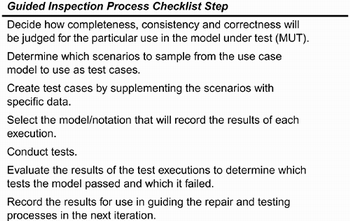Summary
| The techniques presented in this chapter are sometimes people intensive and scenarios should be systematically selected for maximum effectiveness. In particular choosing use cases that are less well understood or that represent high-risk situations is recommended. This maximizes the likelihood of finding errors and omissions that will have maximum impact on the quality of the system. Figure 4.40 illustrates much of what we want you to get out of this chapter. The UML diagrams have been developed so that they are mutually supportive. The test cases developed in this chapter provide guidance for making a systematic search of the models for potential defects. Figure 4.40. Consistency between diagrams (SD = sequence diagram)
Why is this technique in a book on testing? First, it uses a testing perspective to focus the examination of the models. Second, much of this testing uses a system-wide scope and thus it is a natural role for the system testers. They can participate in the development process from the earliest phases if they have responsibility for developing test cases from the use cases. In this chapter, we have presented an approach that will identify defects early in the development process and will support the early involvement of the test community, and the class integration and system testers in the development project. The checklist in Figure 4.41 summarizes the tasks described in this chapter. Figure 4.41. A guided inspection process checklist
Model-Testing ChecklistThe steps in this checklist are intended to ensure that all of the required activities in the guided inspection process are completed. A detailed process is defined in the addendum to this chapter. |
EAN: 2147483647
Pages: 126

